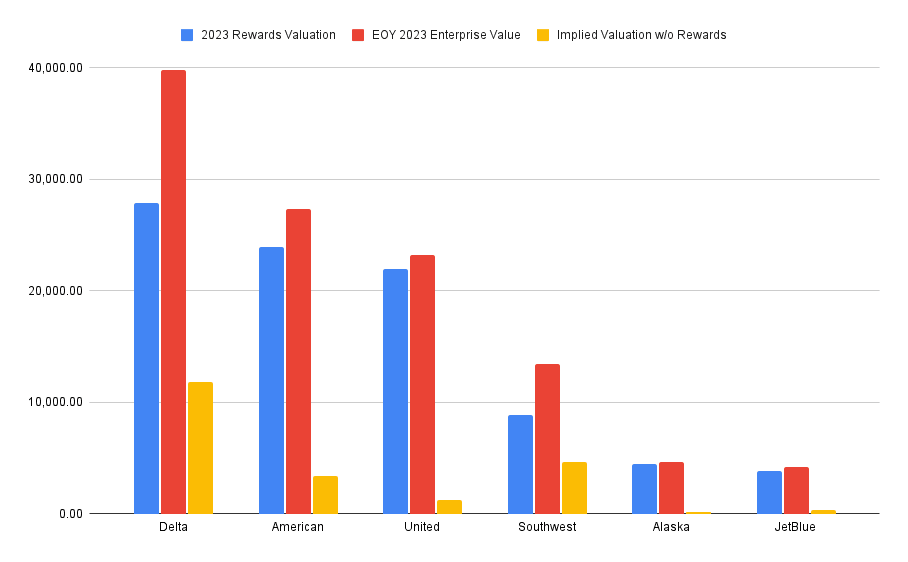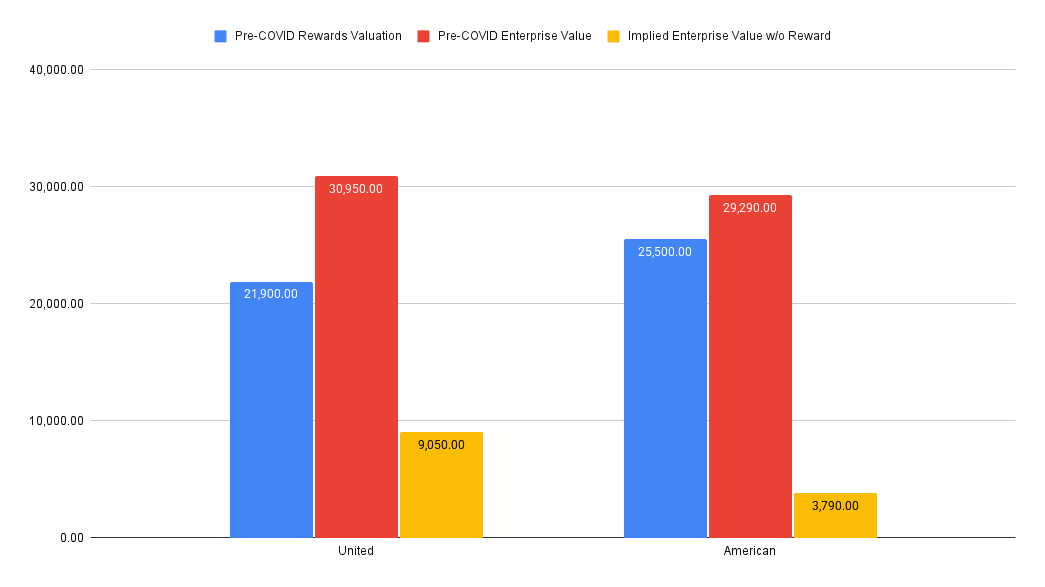It turns out that airlines largely do not make their money from selling tickets. Instead, airlines are primarily in the business of selling credit card rewards.
Rewards programs are intangible assets, so the financial statements of major airlines do not generally give valuations for them. However, there are a couple public sources for how valuable these rewards programs are:
- During COVID, many US major airlines applied for loans under the CARES Act. Some of them used their rewards programs as collateral for these loans, and both United and American publicly disclosed their reward programs' appraised values for this purpose.
- On Point Loyalty, a consultancy firm focused on loyalty programs, published appraisals of most airlines' rewards programs in 2023 and in 2020. Their methodology is proprietary and it is unclear what data their numbers are based on, but the estimates agree with the CARES Act disclosures.
Major US airlines also trade publicly, so we can see what portion of the airlines' value is due to their reward programs. Here's a chart of the EOY 2023 enterprise value of the top six US airlines, their On Point reward program valuation, and the difference between those two amounts (figures in millions of USD):

It turns out that the rewards programs constitute the majority of the value of every major US airline. The entire business of selling flight tickets is, to an extent, a loss leader for the airlines' real business of selling miles.
It's not just On Point's valuations being wrong either, the United and American CARES Act filings tell the same story:

In fact, the only reason airlines can afford to operate the way they do is because American consumers subsidize the industry every time they make a credit card purchase. About 15% of US interchange (the fee that businesses pay in order to accept card payments) is ultimately paid to airlines in return for loyalty program benefits.
You pay for your flights with every purchase you make, not just when you buy the tickets.
Note: a previous version of this post incorrectly used market capitalization rather than enterprise value as the total value of the airlines' business, failing to take debt into account. Thank you to @Mis-Understandings for pointing this out.